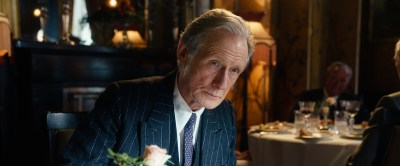
Here are the five short documentary nominees for Oscars this year. Altogether they are a nice mix, all different, yet interesting on their own considerable merits. A jumbo bowl of popcorn is needed here.
Nǎi Nai and Wài Pó (US) – These two irrepressible Chinese women are the grandmothers of filmmaker Sean Wang. There’s not a lot of story here, but seeing these two women in action, staying active, minds sharp, sense of humor intact, is a treat. Wài Pó is in her mid-eighties and says she feels like she’s twenty; Nǎi Nai is in her mid-nineties and says she feels like she’s a hundred. They are not related by blood, but by the marriage of their children and live together, keeping each other very much on their toes (trailer).
The ABCs of Book Banning (US) – There’s no question about where director Sheil Nevins stands on this issue, but her team taken the interesting tack of asking kids themselves (an astonishingly articulate group of Florida readers, mostly ages 9-11) what they think. Quotes are included from some of the more than 2000 books removed from school shelves and, while they may not represent the content the banners were objecting to, they certainly suggest the book’s message. It’s obvious the children don’t understand these efforts to deny them knowledge. In the words of one of the children. “Why?” Oh, and their biggest champion? A 101-year-old woman! (trailer).
Island in Between (Taiwan) – Director S. Leo Chiang has created a troubled poem about Taiwan, its future, and, in particular, the Taiwanese islands of Kin Men (Quemoy), perilously close to the Chinese mainland, which of course claims Taiwan is one of its provinces. His three passports—US, Taiwanese, and special permit for Kinmen—symbolize how torn he is about where he actually fits (stream).
The Barber of Little Rock (US) – John Hoffman and Christine Turner follow Arlo Washington on his rounds in the Arkansas capitol. He is a barber, he runs a barber school (which has trained more than a thousand mostly young men, mostly Black for what can become a solid career. Troubled by the wealth gap between Little Rock’s Black and white communities and the difficulties Blacks have obtaining loans to start businesses, and so on, he started a nonprofit community bank. Note that 95 percent of the recipients of his loans have repaid them (stream).
The Last Repair Shop (US) – This is the real “feel-good” documentary of the bunch. The Los Angeles Unified School District still maintains its program of giving musical instruments to students who want to participate in band or orchestra programs. These old instruments have been through many hands and keys stick, wood cracks, welds break. Four people (one each for stringed instruments, brass instruments, woodwinds, and pianos) repair and tune the instruments so that no child is denied the joy of making music. These four people themselves have fascinating and difficult histories so that, at a very personal level, they recognize how important these instruments are, a pathway to fitting in (stream).











